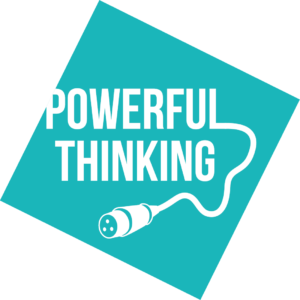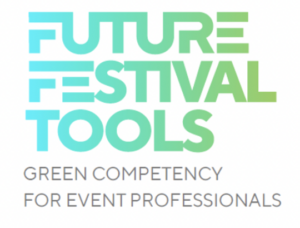We burn an estimated 5 million litres of diesel at UK festivals each year. Research repeatedly has found that the majority of generators run at loads of 25% of their capacity. Power is typically one of the five largest single production costs for a festival. It is one of the few payments not known pre-event, and it is left to a third party to report on, often without safeguards or proper scrutiny. Power also typically represents up to 65% of an event’s ‘core’ carbon footprint (i.e. not including audience travel).
Events can typically reduce fuel use by between 10% and 50% according to Powerful Thinking’s Smart Energy Guide, and there are numerous examples including the Showmans Show, Towersy Festival, Reading and Shambala Festival.
Using more fuel and equipment than is needed is generally the result poor advance planning and limited information about power requirements, a lack of transparency in relationships, and a lack of focus on energy efficiency.
For many summer festival organisers this is a perfect time to think about putting measures in place to ensure you can minimise fuel use this year and be in the best position to make good decisions and reductions the following year. There are two key elements to get right now; Your contract with the power provider and ensuring energy is monitored properly. Contracts with providers are a key tool in managing expectations, especially changes.
1. Communicate
Have a full conversation with your energy provider. Make energy efficiency a stated priority. Be clear about your intention to work with the power provider(s) and agree a realistic target for fuel reductions. With a clear focus on efficiency on both sides, there will be a better likelihood of achieving savings without compromising either party.
2. Identify targets
As events are all different in type and size, targets are best based on last years fuel data if you have it, and taking into account any significant changes for this year of course. Another approach is to use a comparable units of fuel consumption such as ‘litres per audience day’ – i.e. total amount of fuel consumed divided by the number of audience and days. There is a simple and free tool to work this out online at www.powerful-thinking.org.uk/fueltool. You can use your information to compare your event to the industry average as a guide, and create a target.
3. Get the contract right
The next most important step is Include specification of power requirements in the contract with the power provider. At the risk of stating the obvious, contractors can plan a more robust and efficient power system with good information. I say this because perhaps surprisingly, it’s not necessarily normal that they get good information. Research has repeatedly revealed that generator sets are oversized and fuel wasted due to a culture of inaccurate information, often with a chain of stakeholders adding a margin for safety, the margin ending up being huge.
4. Plan with good information
Supply the power provider with a detailed site map and full list of end-users of power, and consider making it their responsibility to contact each one and establish what they need. There may be online systems which they can use, or you set up for them to aid this process. Alternatively, you could take on collecting information yourself, but make sure you know and understand what you are asking for. It’s more important to know the total or peak kW rating of all the users combined equipment than what connection they say they need – gone are the days when all we need to know is whether they require a 16 or 32A feed, as end users often don’t actually know how much power they need.
5. Monitor and report
Another crucial element of efficiency is energy monitoring. Knowing how much power is demanded (at any one time) compared to a generator capacity helps to assess changes in future. A study by DeMontfort University found that 60% of generators were twice or more the required size. Whilst in the dynamic environment of festivals contingency will always be required, achieving an efficient system requires reducing this extra capacity to sensible levels.
Many power providers are now offer monitoring as standard, and newer generators have inbuilt monitoring systems and telemetry i.e SIM cards that can transmit the monitoring data in real time. It’s also becoming more common to have software to view energy data in real time – this is great for safety too, as they can monitor if a generator is too close to capacity and may fail. The information that needs to be collected is the size of each generator, energy demand, preferably in real time or every minute, and fuel consumption, preferably hourly.
If you are a very small event, or for any reason the power provider cannot offer monitoring, or the equipment is very old, it’s perfectly acceptable and useful to assign a member of staff or volunteer to take hourly readings on generators, although you will need permission and to get a briefing from the power provider for safety. If you are doing it yourself, make sure you still ask the provider for total fuel consumed for each generator set individually so you or they can work out the efficiency of each set post event.
Knowing the peaks or spikes in energy demand is very valuable. Often you can identify what causes a short period of peak demand and find ways to eliminate them, making it likely and easy to reduce the size of the generator, and reduce fuel consumption.
There is often an absence of reporting about energy performance in the UK festival sector. Stipulate a full post-event report as part of your contract, presenting the monitoring data and recommendations for efficiency savings in future years. We have to ask ourselves why this hasn’t been normal for years?
If asking your power provider to collect end-user requirements in advance, monitor energy onsite and provide detailed reporting, be prepared for it to add cost. But also bear in mind that efficiency savings are likely to cover any extra costs. I recommend to consider longer-term contracts if you don’t already. Most suppliers would welcome a multi-year contract, and it provides confidence to commit to changes in approach which may take more than one year to achieve and yield results, and may help create a willingness to invest in energy-efficient equipment.
Next steps
Fuel efficiency through better planning and data is certainly the best first step. But there are lots of other ways to reduce fuel consumption and energy-related emissions, such as integrating battery’s into your power system, using a grid connections or solar, switching to renewable fuels, and demand reduction.
It’s an exciting time for energy at outdoor events, with power providers improving practices, new technology and fuels emerging, a growing number of experts and consultants available to organisers, and general step across the industry toward doing things smarter.
Check out the Powerful Thinking website for a wide range of case studies, fact sheets and the Smart Energy Guide for Festivals and Events.
























